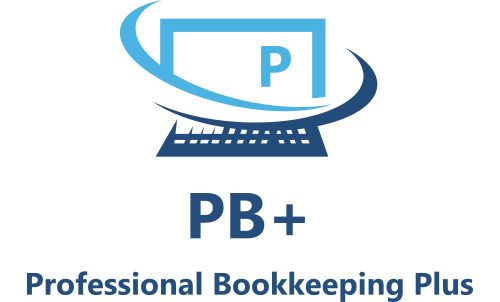Discover How Offers in Compromise Can Transform Your Financial Future
Article Highlights:
- About Offers in Compromise
- Application of Up-Front Payments
- Application Fee
- Low-Income Taxpayers
- OIC Concepts
- Doubt as to Liability
- Doubt as to Collectability
- Promotion of Effective Tax Administration
- OIC Qualifications
- Pre-Qualifier Test
- Submission Procedures
- Forms 433-A and 433-B
- Barriers to Offer Processability
- Offers Withdrawn or Determined Non-Processable
- Rejected Offers
- Accepted Offers
- Guidelines for IRS Financial Analysis of a Taxpayer’s Offer
An Offer in Compromise (OIC) is a program offered by the Internal Revenue Service (IRS) that allows taxpayers to settle their tax debts for less than the full amount owed. This program is particularly beneficial for financially distressed taxpayers who are unable to pay their tax liabilities in full. However, the IRS will not accept an offer if the taxpayer can pay their tax debt in full over time through an installment agreement. The OIC program has undergone several changes over the years, most notably as the result of the IRS's former "Fresh Start" initiative, which made the terms more flexible and accessible. This article delves into the various aspects of the OIC program, including application fees, up-front payments, low-income taxpayer offers, lump-sum offers, periodic payment offers, and the different concepts and qualifications involved.
Application of Up-Front Payments - When submitting an OIC, taxpayers are required to make a non-refundable, up-front payment. This payment is necessary while the IRS considers the merits of the offer. However, the initial payment and monthly payments are not required for individuals meeting Low Income Certification guidelines. According to the instructions in the OIC booklet, Form 656-B (April 2024), the payment options are:
- Lump-Sum Offers: A lump-sum offer requires the taxpayer to pay 20% of the offer amount upfront, with the remaining balance to be paid in five or fewer installments within five months of the offer's acceptance. This type of offer is suitable for taxpayers who can gather a significant portion of the settlement amount quickly.
- Periodic Payment Offers: Periodic payment offers allow taxpayers to spread out their payments over a longer period, ranging from 6 to 24 months. The first payment must be made with the offer, and subsequent payments must follow the proposed terms. This option is ideal for taxpayers who cannot afford a lump-sum payment but can manage smaller, periodic payments.
These up-front payments are considered payments of tax and are not refundable. If the offer is rejected, the up-front payments will be applied to the taxpayer’s liability.
Application Fee - Submitting an OIC requires a $205 application fee. However, there is an exception:
- Low-Income Taxpayers: If the applicant is an individual or is operating as a sole proprietorship and their household gross income meets the low-income guidelines, the application fee is waived. For the most recent year, a low-income taxpayer was an individual with an Adjusted Gross Income (AGI) that doesn’t exceed 250% of the applicable poverty level. This provision is built into the Low-Income Certification chart in Form 656.
OIC Concepts – An offer is predicated on one of three concepts:
- Doubt as to Liability - This concept applies when there is a genuine dispute about the existence or amount of the tax debt. Taxpayers who believe they do not owe the tax or that the amount is incorrect can submit an OIC based on doubt as to liability. Form 656-L is used for this purpose, and it must include a detailed description of why the taxpayer believes the liability is incorrect.
- Doubt as to Collectability - This concept applies when the taxpayer’s assets and income are insufficient to pay the full tax liability. The IRS evaluates the taxpayer’s reasonable collection potential, considering their income, assets, and allowable living expenses. If the IRS determines that the taxpayer cannot pay the full amount, they may accept an offer based on doubt as to collectability.
- Promotion of Effective Tax Administration - This concept applies when collecting the full tax liability would create economic hardship or would be unfair and inequitable. Even if the taxpayer can pay the full amount, the IRS may accept an offer if it promotes effective tax administration. This category is less common and requires a compelling reason for acceptance.
OIC Qualifications - To qualify for an OIC, taxpayers must meet certain criteria:
- All required tax returns must be filed.
- All required estimated tax payments for the current year must be made.
- The taxpayer must not be in an open bankruptcy proceeding.
- The taxpayer must use the most recent version of Form 656 and provide all necessary documentation.
Pre-Qualifier Test - The IRS encourages taxpayers to use the Offer in Compromise Pre-Qualifier tool available on their website. This tool helps taxpayers determine their eligibility for an OIC and prepares a preliminary proposal. It is a useful resource for taxpayers to assess their chances of acceptance before submitting an offer.
Submission Procedures - The procedures for submitting an OIC are outlined in Rev. Proc. 2003-71. Taxpayers must submit Form 656, along with Form 433-A (for individuals) or Form 433-B (for businesses), and any other required documentation. The information provided must be current, reflecting the taxpayer’s financial situation for the three months preceding the offer submission.
Forms 433-A and 433-B - Form 433-A, Collection Information Statement for Wage Earners and Self-Employed Individuals, and Form 433-B, Collection Information Statement for Businesses, are essential components of the OIC application. These forms require detailed information about the taxpayer’s income, expenses, assets, and liabilities. They must be filled out completely, with items that don’t apply notated as N/A (not applicable).
Barriers to Offer Processability - Several factors can render an OIC non-processable:
- Incomplete forms or missing documentation.
- Failure to pay the application fee (unless waived).
- Failure to make the required up-front payment (unless waived).
- Not filing all required tax returns.
- Not making all required estimated tax payments for the current year.
Offers Withdrawn or Determined Non-Processable - Taxpayers can withdraw an OIC at any time before its acceptance. The withdrawal request can be made in person, by mail, fax, or telephone. Once an offer is withdrawn, IRS collection activities can proceed. If an offer is determined to be non-processable, the IRS will return the application fee but apply any initial payment to the outstanding tax debt.
Rejected Offers - An OIC is not considered rejected until the IRS issues written notice of the rejection. The taxpayer has the right to request a meeting to discuss alternative solutions. If no agreement is reached, the taxpayer has 30 days to file a protest with appeals. The IRS will notify the taxpayer by mail, providing the reason for the rejection. The application fee is not refunded, but the taxpayer can submit another offer with a new application fee.
Accepted Offers - If the IRS accepts the taxpayer’s offer, they send written notice by mail. The taxpayer must comply with the offer terms and make prompt payments to prevent default. Once the payment terms are met, the IRS will release all Notices of Federal Tax Lien against the taxpayer. Accepted offers become public information, and if the offer involves more than $50,000, a written opinion from the IRS Chief Counsel is required.
Guidelines for IRS Financial Analysis of a Taxpayer’s Offer - The IRS uses allowable living expense standards to evaluate a taxpayer’s ability to pay. These standards, which are revised periodically, incorporate average expenditures for the basic necessities for people in similar geographic areas. The IRS considers three standards for determining necessary expenses based on a taxpayer’s income level:
- National Standards: Cover food, clothing, and other items.
- Local Standards: Cover housing and utilities, and transportation
- Other Necessary Expenses: Include health care, taxes, and court-ordered payments.
The Offer in Compromise program is a valuable tool for taxpayers struggling with tax debt. The initiative has made it easier for more taxpayers to qualify for an OIC, providing a pathway to financial relief.
However, applying for an OIC can be complex and is generally best handled by a tax professional. Contact this office for assistance.
CONTACT INFORMATION
Address: 10926 David Taylor Dr Suite 120 Charlotte, North Carolina 28262
Email: ljackson@jstaxandpbplus.com
Phone: 704-604-0862




BUSINESS HOURS
- Sun, Wed
- Closed
- Mon, Tue, Thu
- -
- Fri - Sat
- -












